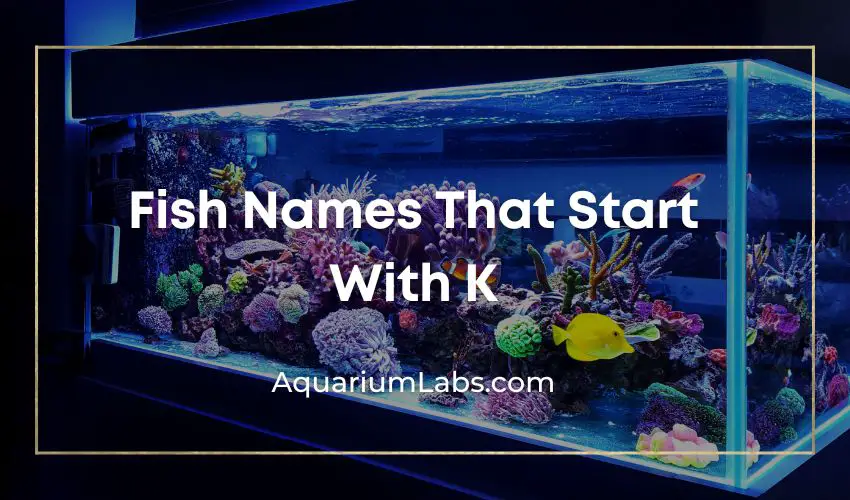Kissing Gourami is a popular aquarium fish that readily comes to mind when you think about fish names that begin with K. Apart from the kissing gourami, there are countless other popular freshwater and saltwater fish with common names that start with the letter K.
Check out our top 17 list of fish that starts with K. You can also check out the two lists of fish names that start with the letter K below!
Our Top 17 Fish That Starts with K
Kissing Fish (Helostoma temminckii)
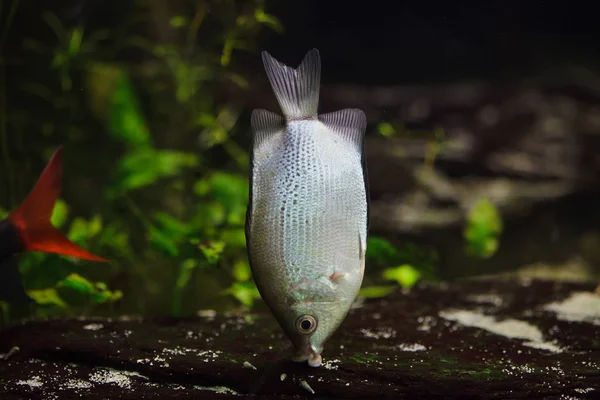
Other common names for the Kissing Gourami fish include Green Kissing Gourami, Pink Kissing fish, Pink kisser, and Kisser fish. The kissing gourami is a freshwater fish in the Helostomatidae family.
The Kissing gourami is a popular ornamental fish in the aquarium hobby. It is notorious for its kissing behavior, which is most likely the reason for its name.
Both males and females exhibit this odd kissing behavior. They usually face one another to press their mouths together before a quick release. Sometimes, they also kiss other fish and even rocks and substrates in the aquariums they inhabit.
This fascinating kissing behavior is believed to be a sign of aggression through which individual gourami establishes his dominance in the tank. They are semi-territorial, but some individuals get along well with other freshwater fish of similar size.
Knight Gobie (Stigmatogobius sadanundio)

The Knight Gobie fish is a 3 inches brackish water fish found in many parts of Asia. You can find them in estuaries in Thailand, Sri Lanka, Cambodia, Bangladesh, and Singapore.
It is a very territorial fish. You want to keep lots of rocks, plants, and other visual barriers to maintain peace in the tank. Apart from its unique protruded dorsal fin, it has an impressively gray body with black dots scattered all over its body.
It is a carnivore that eats small invertebrates. So, it is likely to eat smaller fish if you keep it with other smaller fish like baby bumblebee fish and guppies if left in the same tank.
Katangae Nile Bichir (Polypterus bichir katangae)

This fish is a tropical freshwater fish endemic to the freshwaters of the Katanga region and other parts of Central Africa.
They are carnivores and, like some other polypterus species, like to bask close to the surface of the water for long. They are very adept swimmers that can turn, bend and twist like an eel. They feed on small fish and invertebrates.
It is spectacular for many reasons, including its ability to breathe air. It has a pair of lungs that enables it to breathe air. It also has electroreceptors that help it sense electric signals given off by its prey when they hunt at night.
Kuhli Loach (Kuhli Loach (Pangio kuhlii)
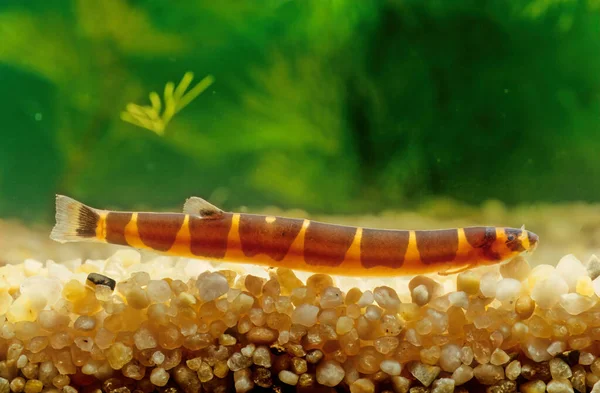
The Khuli loach is a shy scavenging fish native to tropical South America. It is a small freshwater fish that looks like an eel and is common in the Malay Peninsula and Indonesian freshwaters.
This loach belongs to the Cobitidae family. It is a nocturnal fish with a slender body and a very reclusive nature. Its natural response to any sudden shock or alarm is dashing under the substrate, caves, or any nearby decorations to hide.
But it is an excellent choice if you are searching for an ornamental fish.
Killifish (Nothobranchius flammicomantis Kisaki)
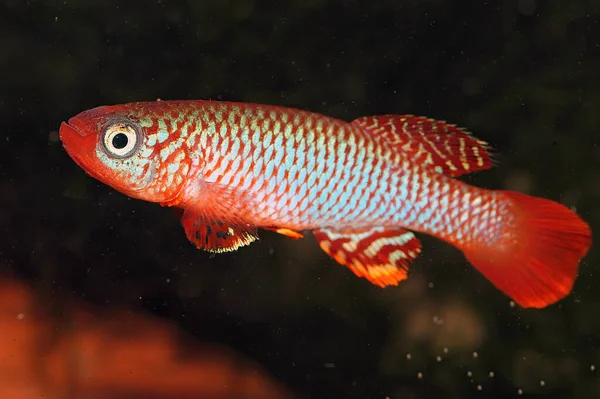
These small and beautiful fish live in many diverse environments across the world. It belongs to the order of Cyprinodontiformes, which has more than 1250 distinct species.
They are egg layers with sizes ranging from 1 to 2 inches. Some others grow up to 6 inches. They feed on plant matters and other smaller aquatic animals such as worms and insect larvae.
You need to feed this species regularly to provide for its rapid growth and prevent it from being food to other bigger fish in the tank.
You want to keep more than one Killifish in the tank, but this depends on your tank size.
Kenyi Cichlid (Maylandia lombardoi)

The Kenyi Cichlid is part of the Mbuna group. It is commonly found in the rocky areas of Lake Malawi.
Like many other cichlids, it is notorious for being aggressive and has a reputation for being the most aggressive among the Mbunas. The aggressive nature can also be seen with the juvenile Kenyi cichlids in their attempt to dominate other small fish.
They are not a good choice for a community tank. If you must keep them in a community tank, It would be ideal to keep them with other African Mbunas. It is not also suitable for beginner hobbyists.
Keyhole cichlid (Cleithracara maronii)
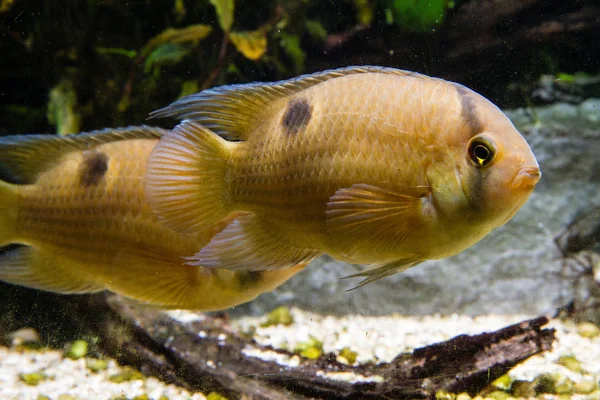
Although being a cichlid, this cichlid is a peaceful fish and perhaps the most peaceful fish of all cichlids. It is endemic to the Orinoco river estuary in South America, and it is the only species in the Cleithracara genus.
It loves to live in slow-moving water bodies that flow through thick forests. The Keyhole cichlid also prefers to live in waters that are poorly lit.
It is not very common in the aquarium hobby because it does not have vibrant colors like many other popular cichlids.
Kuiper’s Loach (Nemacheilus selangoricus)
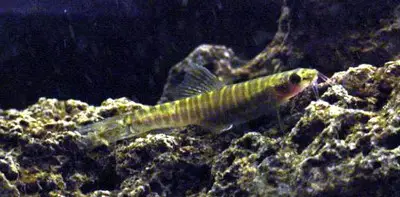
The Kuiper’s loach is also known as the fighting loach, even though it has a peaceful nature. Its peaceful nature makes it an excellent choice for a community tank.
You want to keep a group of fighting loaches at a time, and you also want to provide as many hides as possible since they will establish their territories.
Although they are very tranquil during the day, you might find them lying by their side and occasionally engaging in tail slapping fights.
Kooliad barb (Barbus tetrazona)
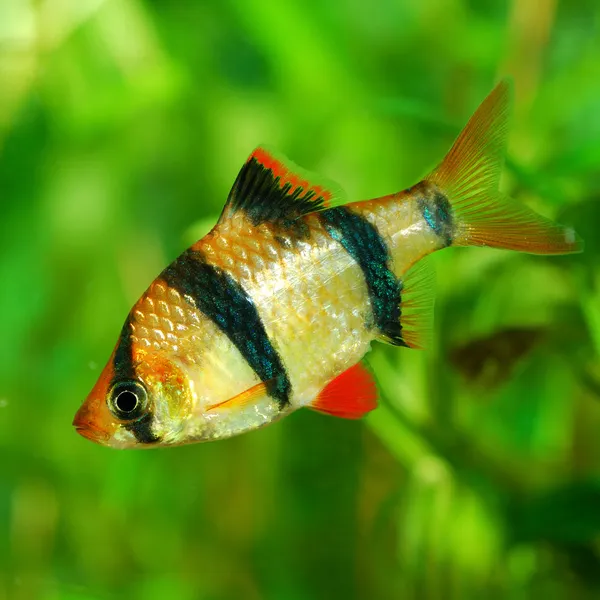
Also known as Tiger barb, this fish is a semi-aggressive and colorful schooling fish. It is one of the numerous easy-care fish in the aquarium trade.
They do well in aquariums as long as you do not include slow-moving fish as their tank mates. They have a penchant for nipping at the fins of slow-moving fish in the community tank.
However, they make a good community fish and will live peacefully with tank mates like the Dwarf gouramis and Cory catfish.
They usually have about 4 tiger stripes on their orange and yellow bodies. In the wild, they feed on plant matters, worms, and insect larvae. But in the aquarium, they will readily feed on flake food, live and frozen food, as well as beef heart.
Kokanee Salmon (Oncorhynchus nerka)
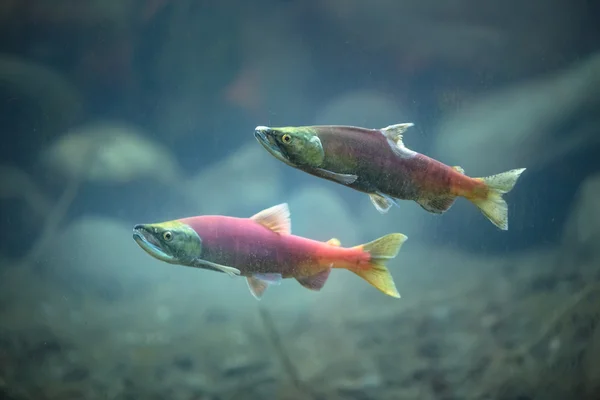
Other common fish names for this fish include Kokanee trout, Little redfish, Kennerly’s Salmon, etc. It is a freshwater fish commonly found in many lakes in the western united states and Canada.
It belongs to the genus Oncorhynchus. They are usually smaller than other salmon species that leave freshwater for the sea.
Like many other salmon species, this fish returns from the lake to the streams where they hatched to spawn. Their life cycle is the same as the life cycle of other salmon species. The female Kokanee can lay up to 1000 in a nest she creates.
The availability of food determines how many eggs she lays in her Redd. The nest is called a Redd
The eggs hatch 110 days, and the juveniles find their way to the lake.
Koi Carp (Cyprinus carpio)
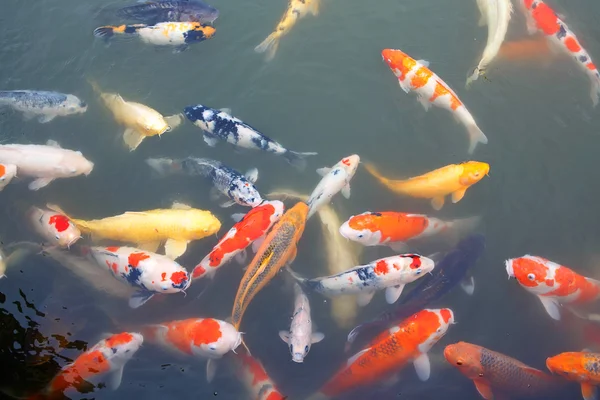
This is a popular ornamental fish in the aquarium hobby. This peaceful fish can live for up to 50 years! If you want to make a good choice in choosing a lifelong pet, this is the fish for you.
It originated in Niigata, Japan but has become a popular fish for decorative purposes all around the world. There are various types with different colors and marks.
The Koi carp is a very hardy freshwater species and can survive a variety of conditions. They are temperature resistant and will even tolerate the icing cold winter by hibernating. But you want to ensure that your outdoor pond is at least 3 feet deep.
But indoors, they prefer cool water in the temperature range of 65°f. -75°f.
Knifejaw (Oplegnathus fasciatus)
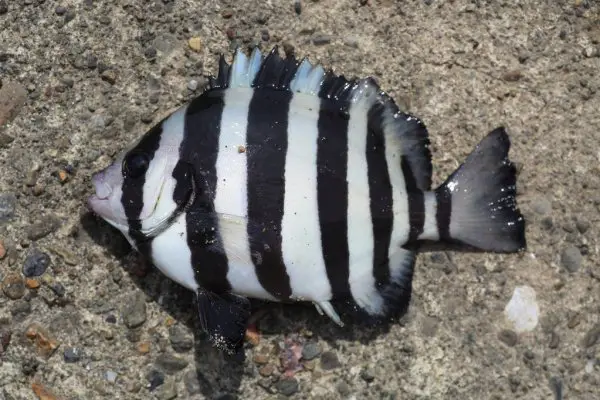
This very sought-after game fish is also known as the Barred Knifejaw. It is one of the numerous marine fish species in the Oplegnathidae family. It belongs to the Oplegnatus genus.
It is endemic to the reefs of the Northwest Pacific Oceans, especially in rocky areas. Apart from being a game fish, it is a commercially important fish species that many fish farmers farm. It likes feeding on hard-shelled invertebrates such as crustaceans.
Juvenile knifejaws usually swim and stay within patches of seaweed.
Kafirnigani Gray Loach (Triplophysa dorsalis kafirnigani)
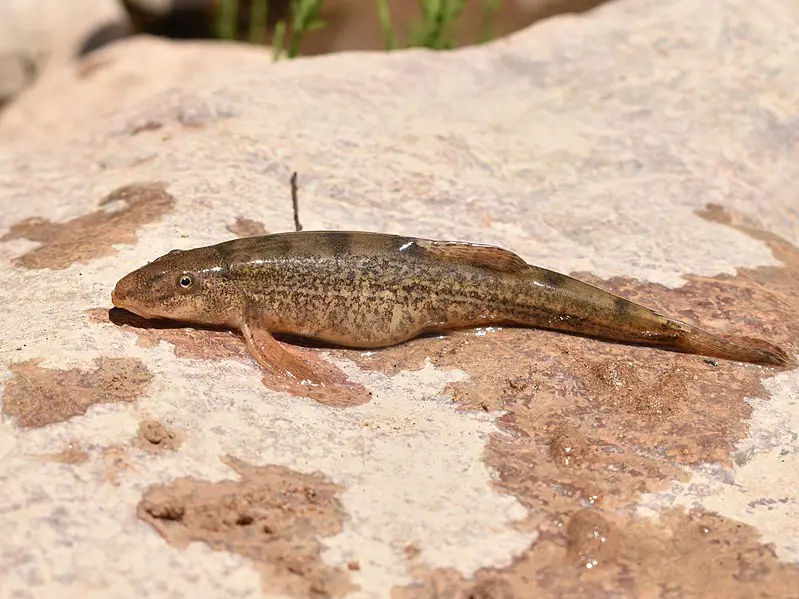
Photo credit: https://commons.wikimedia.org/wiki/File:Triplophysa_stolickai_02.jpg
Another name for this fish is the Gray loach. Tis fish is not a popular fish in the aquarium hobby. So you may not see it in pet stores like many other loaches that are readily available in pet stores.
This fish comes from China. It is a freshwater fish that generally grows up to 4 inches but can reach 5 inches in length.
It is commonly found in slow-flowing rivers and lakes that are heavily planted. Even though it is not a popular loach species in the trade, it can be raised in captivity as long as you have the proper water parameters in your aquarium.
Kafue Pike (Hepsetus cuvieri)
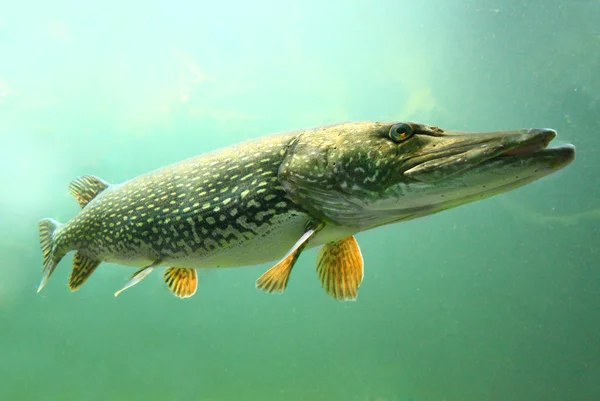
This is another great fish in our list of fish names beginning with the letter K. This fish is a predatory fish by nature.
It is a great tank mate for other large and non-aggressive fish species. As a predatory fish, keeping it will smaller fish will be a bad idea. It will see the smaller tank mates as food, and feeding on them will be inevitable.
This fish can grow up to a length of inches and more. Although there are several similar species in other parts of the world, like the northern pike and many others, this species is endemic to the lakes, swamps, and rivers of many African countries. Countries, where they are found include Senegal, Nigeria, Benin, Liberia, Gabon, etc.
Kyburz Tetra (Pseudochalceus kyburzi)
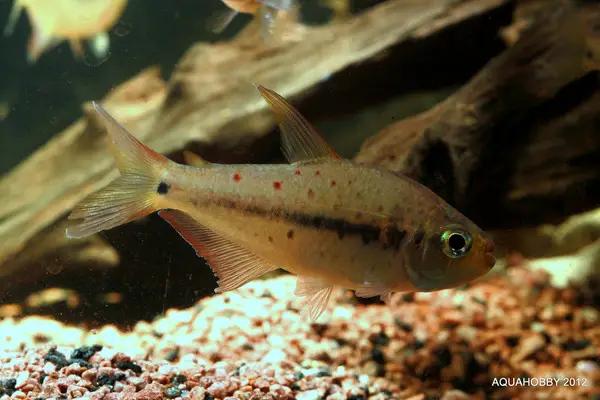
Originating in Colombia, on the side of the Pacific, the Kyburz tetra is a freshwater fish that love to live in groups, as with most tetras.
This schooling behavior makes them a good choice for a community tank. But the Kyburz tetras are not common in the aquarium hobby.
It is easy to care for and is an excellent addition to the tank. This fish is usually territorial, especially in the adult stage. The males become territorial as they fight for dominance. But if you house them in a large tank with lots of decorations and plants, the chances of confrontations will be significantly reduced.
Kiver (Lepomis gibbosus)

The Kiver is a small fish species in the Centrarchidae species. It is common in North America. Pond perch, Common Sunfish, Sunny, Kivver, and Punkie are other common names for this fish.
It generally grows up to a length of about 4 inches, but it can grow up to inches. They like small rivers, ponds, calm lakes, and pools of creeks with vegetation. If you are keeping some, you want to include live plants in the tank. This is especially important because they love clear and well-oxygenated water.
This fish generally has a yellow, blue, or green color, an orange green underside, and speckles on its sides. One thing to note about this fish is that it is not an aquarium fish, and it is very popular among anglers.
Knife Livebearer (Alfaro cultratus)

This is a freshwater fish in the Poeciliidae family. It is endemic to Central American counties like Panama, Costa Rica, and many others.
They love a well-aged tank that is heavily planted with a lot of space for them to swim. You can find them in creeks, ditches, and many other fast-flowing streams in the forest. They like to swim in groups.
They are surface-dwelling fish, and they cherish floating live plants because the plants offer shelter and a place to spawn. You will love them.
List of Fish Beginning With K
Below is a list of many other fish names beginning with the letter K. Some form our top picks above, but there are many others that will thrill you.
Check them out!
Freshwater Fish Beginning With K
- Kafirnigani Gray Loach (Triplophysa dorsalis kafirnigani)
- Kafue Pike (Hepsetus cuvieri)
- Kaluga (Huso dauricus)
- Kanyu (Elopichthys bambusa)
- Katangae Nile Bichir (Polypterus bichir katangae)
- Kenyi Cichlid (Maylandia lombardoi)
- Keyhole Cichlid (Cleithracara maronii)
- Killifish (Nothobranchius flammicomantis Kisaki)
- Kissing fish (Helostoma temminckii)
- Kingsley’s Ctenopoma (Ctenopoma kingsleyae)
- Kiver (Lepomis gibbosus)
- Kner’s Banjo Catfish (Dysichthys knerii)
- Knifefish (Rhamphichthys marmoratus)
- Knife Livebearer (Alfaro cultratus)
- Knight Gobie (Stigmatogobius sadanundio)
- Koi Carp (Cyprinus carpio)
- Kokanee Salmon (Oncorhynchus nerka)
- Kokopu (Galaxias postvectis)
- Kribensis (Pelvicachromis pulcher)
- Kuhli Loach “Black” (Pangio javanicus)
- Kuhli Loach (Pangio kuhlii)
- Kuiper’s Loach (Nemacheilus selangoricus)
- Kyburz Tetra (Pseudochalceus kyburzi)
Saltwater Fish Beginning With K
- Kahawai (Arripis trutta)
- Kelp Perch (Brachyistius frenatus)
- Kelpfish (Chironemus marmoratus)
- King of the Herrings (Regalecus glesne)
- King-of-the-Salmon (Trachipterus altivelis)
- Kingfish (Menticirrhus americanus)
- Knifejaw (Oplegnathus fasciatus)
Photo credit:
- http://www.theaquariumwiki.com/
- https://www.flickr.com/photos/enjoyfish/7091766627/in/photolist-bNFa9p-rvdy8L/

